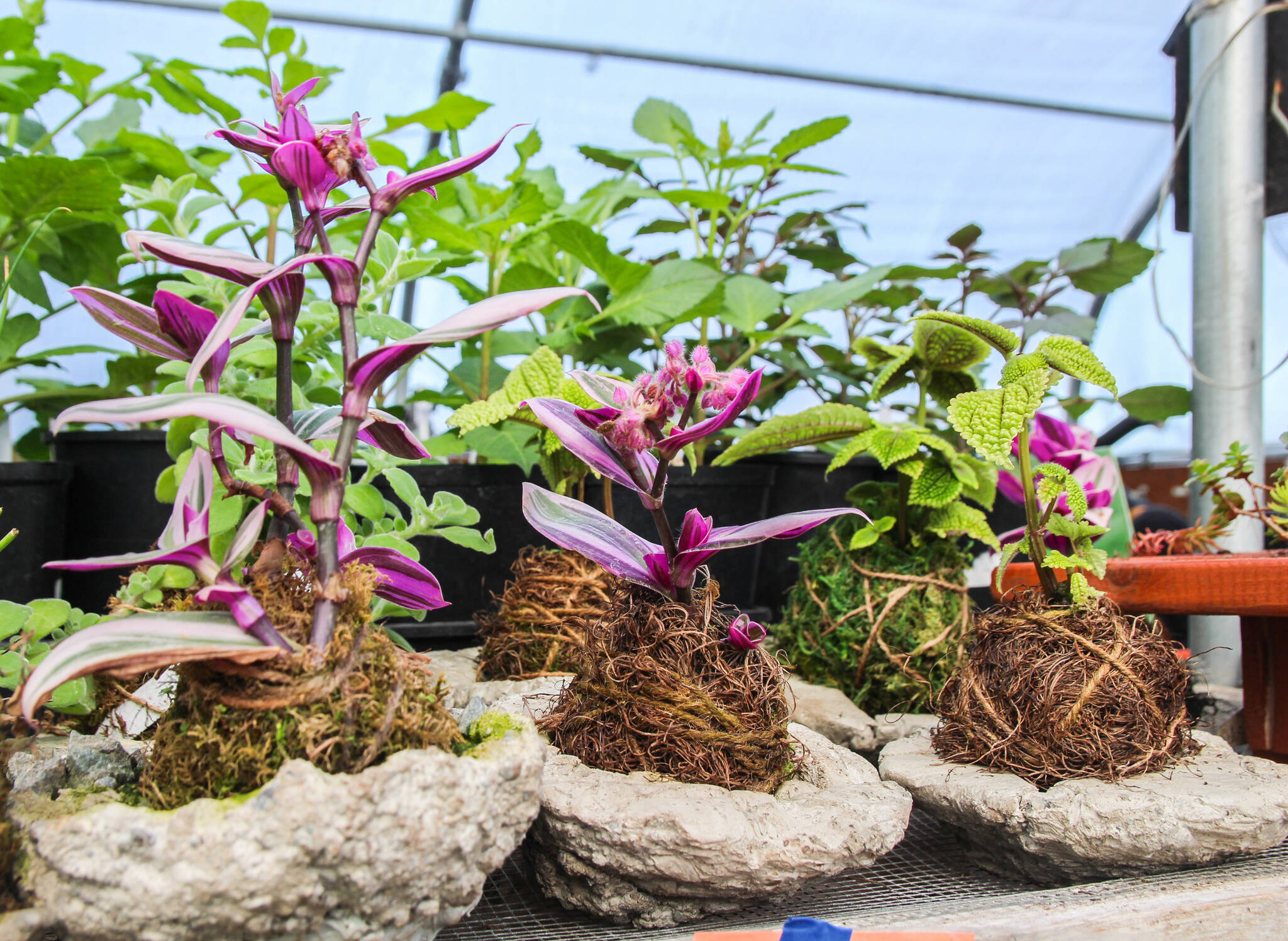The greenhouse behind Coupeville High School buzzed with the chatter of women flying from one plant to another like meticulous working bees.
Earlier in the year, this would have been a sight for Tuesday mornings. But as one last big effort before its one and only plant sale event, the Coupeville Garden Club has been meeting three times a week to pamper over 4,000 plants that have been in its care since September.
“This is a culmination of all winter’s work,” said Linda Youngs, a member of the club since 2008.
Every year, community members and plant lovers line up outside of the Coupeville Recreation Hall to find a green baby to take home. The club’s 55th annual plant sale will take place from 9 to 3 p.m. Saturday, April 20 at the usual location, offering a wide variety of plants to choose from — like hot and sweet peppers, African daisies, scabiosas, ferns, petunias and more.
Proceeds will be used to plant flowers at the Rec Hall, the town’s welcome signs, the barrels, Captain Thomas Coupe Park and Cooks Corner Park, continuing the club’s decades-long mission to beautify Coupeville.
When the club was created on April 13, 1961, it counted 28 members. Now, according to Club Secretary Kim Rocha, it comprises 64 members, the majority of which are middle-aged and senior women with a love for plants and gardening.
“I really enjoy knowing that we’re really helping the community out,” said Rocha, who joined last year. “It’s just nice to drive down the road and see our work … it makes people smile.”
Virginia Brown has remained loyal to the club for 22 years, and the club activities have been the same for as long as she can remember, she said. The main change has been the members who come and go due to age or to moving away. As a result, the club is always hoping to welcome new people.
Brown, who described herself as a “plant person,” said every plant is her favorite, which sometimes can be a problem.
“I always buy way too much,” she said. “And then I have to figure out what to do with it.”
As she talked by the wall of geraniums in the club’s greenhouse, she accidentally hit a flower with her hand.
“Poor baby!” she exclaimed, gently putting her hand on the unharmed flower.
On the other side of the greenhouse, Susan Moore poured what she called “stink juice,” or fish fertilizer, on the tomato pots.
Moore has been a member for six years, and enjoys watching plants grow from seed.
“They’re like our babies,” she said as she fed the sungold, sweet million, celebrity, early girl, Oregon spring, legend and stupice tomatoes.
Brenda Faris, the club member in charge of the geraniums, said this year’s are “the best and biggest” the club has had in a while. The flowers cover an entire wall at the greenhouse, displaying different colors and varieties.
Compared to the other flowers grown at the club, the geraniums tend to be more labor intensive, Faris said. However, they are worth it.
“Geraniums are gonna give you a really good bang for your buck,” she said.
It’s finally that time of the year where community members adorn their homes with colorful hummingbird feeders. These tiny birds are responsible for pollinating a variety of plants, and Sue Kelsey, the club’s plant growing coordinator, knows which flowers they may find delectable, like the snapdragons, fuchsias and the penstemons.
On the other hand, it’s deer season year-round. While visitors might romanticize the image of a fawn frolicking on someone’s lawn, local plant parents might shake at the mere sight.
“We try to always have some things that are deer resistant, although in Coupeville that’s a hard sell,” Kelsey said. “Sometimes the deer in Coupeville eat the deer-resistant plants.”
According to Kelsey, deer tend to avoid plants with a strong scent, though the juveniles are adventurous and will taste anything before spitting it out. Some of the plants that are less likely to attract deer and that will be offered at the sale include dahlias, lavender, irises, sage, thyme, mint, rosemary and hot lips salvia.
Alternatively, people could still go for the plants deer tend to munch on by using fences or deer repellent spray, though it might smell unpleasant to humans as well.
Other club offerings include Kodekamas, or plants growing from soil balls covered in moss, plants in wooden frames built by the Coupeville school’s woodshop and concrete leaves that can be used as stepping stones and bird baths.
According to Youngs, club members meet every September to cast concrete leaves, which they create by setting a big leaf on a mound of sand and pouring concrete on the mold, which is then peeled off after 24 hours.
After the sale, members will clean up the greenhouse and the pots and focus on their own plants at home. Meetings will begin again in September on the first Thursday of every month, while members meet every Tuesday at 9:30 a.m. to prepare for the next plant sale.
Community members interested in joining the club can reach out to info@coupevillegardenclub.org, while donations can be made to Coupeville Garden Club, PO Box 835, Coupeville, WA 98239.
For more information, visit coupevillegardenclub.org.



